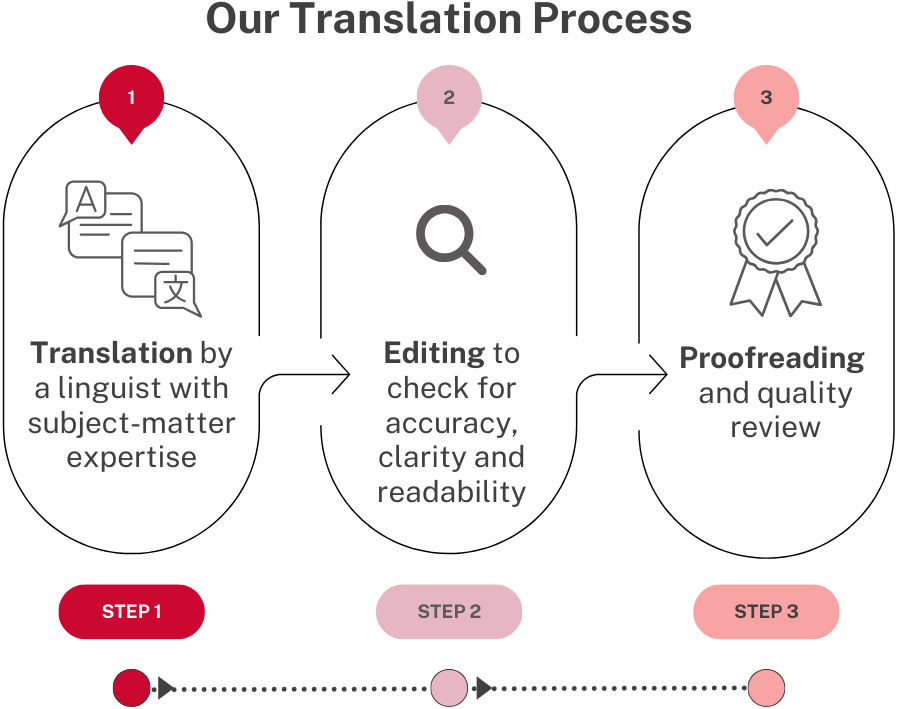
In accordance with our ISO 9001:2015 quality management system, our standard approach for handling the Translation, Edit, Proofread (TEP) process is explained step by step below:
1
When a customer sends us files for translation, one of our Project Managers will confirm receipt. They will work with the customer to obtain any other relevant information; for example, the timescale/deadline for the translation, any customer-specific terminology, etc.
2
The source file will then be assessed by the Project Manager overseeing the project. The Project Manager will analyse the subject matter, the length of the text and the file type so that any desktop publishing requirements can also be considered.
3
At this stage, the Project Manager will send a quotation to the customer, detailing all relevant prices and a timescale to complete the work.
4
A translator will then be selected based on their experience in the subject matter. At this point, the Project Manager will send the translator all of the necessary reference material: termbases, glossaries or online resources.
5
The translator would then start the translation. Throughout this process, the Project Manager and translator will remain in close contact. This helps to ensure that any linguistic or content queries can be answered quickly.
6
The translator will deliver the translation to the Project Manager at the time and date previously agreed. The Project Manager will then ensure that all specific instructions have been followed, after which both the source and target files will be sent to the editor. Editing is only ever undertaken by linguists who work in that specific language pair. During this stage, a rigorous review of the translation is carried out. The accuracy, clarity and readability of the translation are checked, not just spelling, grammar and formatting. The editor will also receive the same reference material and resources that were given to the translator.
7
Once all changes have been made, the Project Manager, or a separate proofreader, will then perform a final review, checking for any spelling and grammar errors, as well as handling any formatting requirements. Depending on the request, any desktop publishing work would then take place.
8
The translation will be sent back to the customer, as agreed, either by email or hard copy should a certified translation be required.
This multi-faceted approach has been the key to the quality of our translation work since the company was founded in 1990.
All of our external linguists have signed a non-disclosure agreement (NDA) and a strict confidentiality agreement; our customers can therefore be completely confident that the documents provided to us for translation will be treated securely and confidentially. We are also able to store any documents that are sent to us in an encrypted folder on our server, and we have systems in place to ensure that any documents we send out to our linguists are encrypted and secure in transit.